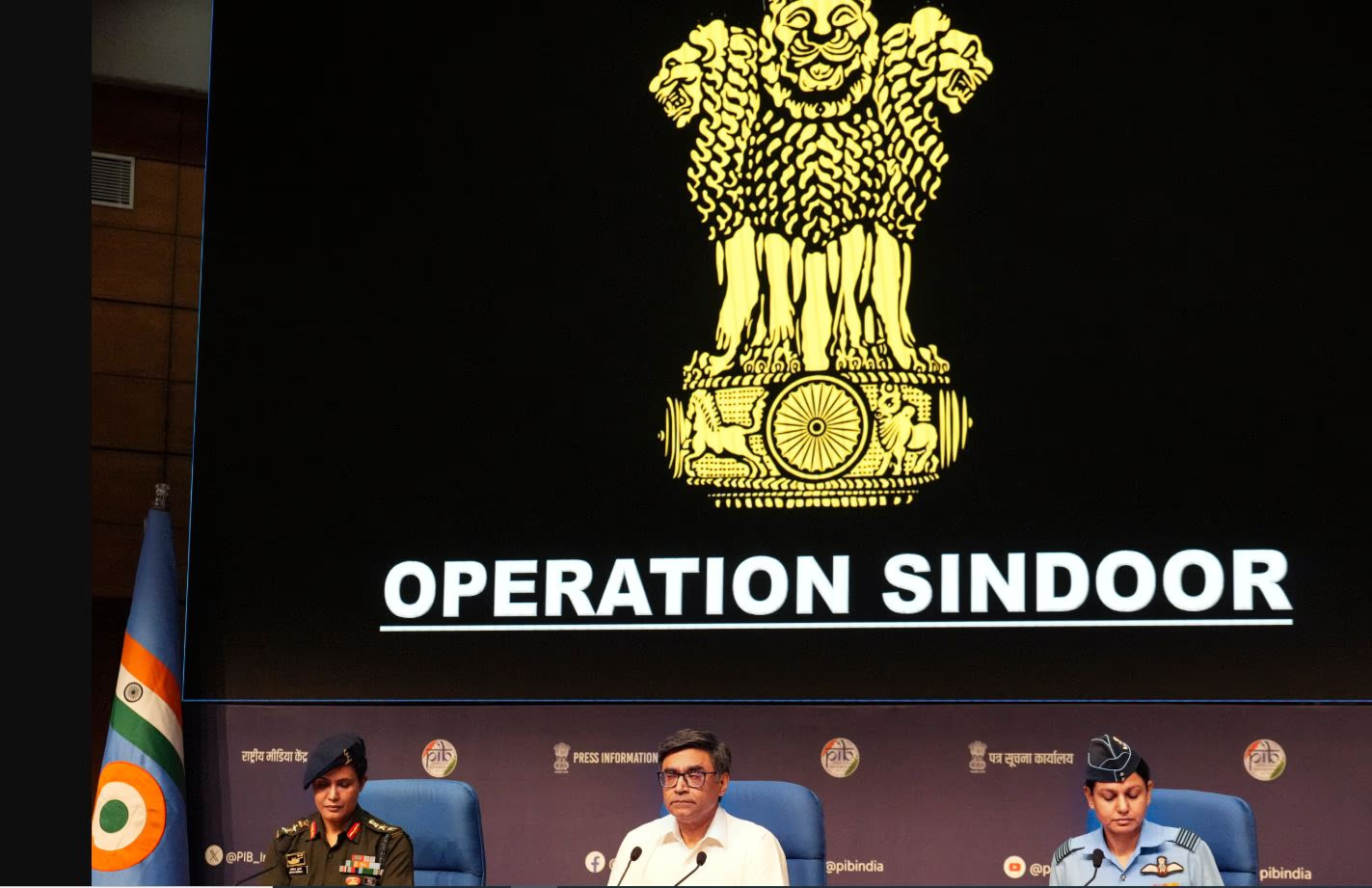In a bold retaliation to the terrorist attack in Pahalgam, Kashmir, India has struck back against Pakistan. On the night of May 6-7, Indian armed forces launched a significant operation against terrorism, obliterating nine terror bases located in Pakistan. This operation is acknowledged as the largest strike to date, particularly notable since it's the first time India directly targeted Pakistan's Punjab. Previously, strikes were mostly confined to regions within Pakistan-occupied Kashmir.
India had previously claimed strikes on terrorist training camps, but this marked the first time India struck directly at the heart of terror groups Lashkar-e-Taiba and Jaish-e-Mohammad in Punjab. The strikes also hit two bases of Hizbul Mujahideen, devastating these terrorist headquarters. Remarkably, Indian Air Force planes did not cross international airspace for this assault.
The operation, conducted entirely within Indian airspace, saw missiles fired to demolish terrorist targets. It's reported that RAW provided a list of 21 targets, out of which missile strikes were executed on 9. The decision to specifically target terrorist headquarters like Lashkar's base in Muridke and Jaish's headquarters in Bahawalpur was made in a strategic meeting on May 3.
Senior defense expert Sandeep Unnithan called this the biggest attack since the 1971 war. He stated, "It's India's most extensive operation against Pakistan since 1971, targeting geographically dispersed locales of prominent terrorist groups Jaish-e-Mohammad and Lashkar-e-Taiba, who've orchestrated significant attacks on India over the decades."
Here’s how this stands as the largest attack on Pakistan yet...
1. First time Pakistan’s Punjab used as a target
For the first time since the 1971 war, India executed a major attack in Punjab province. Considered politically and militarily crucial, Punjab had previously seen targeted actions within Pakistan-controlled Kashmir and adjacent Khyber Pakhtunkhwa following terror strikes in Uri (2016) and Pulwama (2019). Operation Sindoor attacked nine locations, with four in Punjab's Bahawalpur, Sialkot, and Sheikhupura districts.
Terrorist camps targeted include Marqas Subhan Allah Camp (Bahawalpur), Marqas Tayeba Camp (Sheikhupura), Mahmuna Zoya Camp (Sialkot), and Sarjal Camp (Sialkot).
Both Jaish-e-Mohammad and Lashkar-e-Taiba operate from Punjab. Bahawalpur, about 100 kilometers from the India-Pakistan border, houses Marqas Subhan Allah Camp, a known Masood Azhar stronghold alongside a Pakistani regimental center.

Source: aajtak
2. Geographically diverse terrorist headquarters obliterated
The Indian Army, under Operation Sindoor, dismantled a broad geographical expanse of terrorist infrastructure. The operation targeted nine locations in Pakistan and parts of Jammu & Kashmir illegally occupied by Islamabad. Areas targeted include Bahawalpur in southern Punjab, Muridke on Lahore’s outskirts in Sheikhupura district, as well as Muzaffarabad and Kotli in POK, all housing headquarters of Jaish-e-Mohammad, Lashkar-e-Taiba, and Hizbul Mujahideen.
Terrorist training sites, crucial for plotting and executing attacks against India, were also targeted. Among them, Muzaffarabad's Syedna Bilal Camp served as Jaish’s main transit hub for infiltrating terrorists into Jammu & Kashmir. Lashkar’s Muridke center, stretched over 200 acres, functions as the main training facility teaching weapon handling and offering radicalization speeches.
Annually, around a thousand are recruited here. Financially aided by Osama bin Laden for mosque and guesthouse construction, this center also trained 26/11 Mumbai attackers, including Ajmal Kasab. Additional sites were used for India-wide terrorist operations, highlighting Operation Sindoor's unprecedented scale and precision.
3. A relentless 25-minute attack, 970 kilometers from the border
In just 25 minutes, Operation Sindoor struck nine terror sites setting a new precedent in Indian military operations. Indian forces demolished headquarters including Bahawalpur (Jaish-e-Mohammad HQ), Muridke (Lashkar-e-Taiba HQ), Sialkot (terror hub), and Chak Amru (terror camp). Within POK, locations like Muzaffarabad and Kotli saw terror hubs of Lashkar and Jaish ravaged.
Coordinated by India's armed forces branches, these attacks marked the most comprehensive on Pakistani terrorism since Balakot strikes in 2019. According to Foreign Secretary Vikram Misri, targets were selected based on credible intelligence to demolish terrorist infrastructure without targeting Pakistani military. Sophisticated arms such as Scalp cruise missiles and Hammer smart bombs were utilized.

Source: aajtak
4. Reports of 80 terrorists eliminated in Operation Sindoor
The operation reportedly eliminated 80 terrorists, a significant blow to terror outfits continually targeting India. BBC Urdu claimed Indian strikes in Bahawalpur killed Jaish-e-Mohammad chief Masood Azhar’s 10 family members and four associates. Syedna Bilal Camp in Muzaffarabad was destroyed, having housed terrorists allied in the Pahalgam assault alongside Lashkar operatives.
5. Targeting terrorist groups spreading terror in India
Unlike previous military operations, Operation Sindoor avenged the Pahalgam massacre while targeting camps of various groups accountable for numerous terrorist attacks in India. The strikes pinioned Jaish’s Bahawalpur headquarters, Lashkar’s Muridke base, and Hizbul Mujahideen camps, implicated in the 2008 Mumbai attacks and 2019 Pulwama incident.
The 2008 Mumbai attacks killed 166 and injured over 300. Pulwama’s 2019 attack resulted in 40 CRPF casualties. By targeting Pakistan-based terrorist groups, India powerfully conveyed its stance against terrorism, delivering a strategic blow to Pakistan’s proxy war tactics. The wounds inflicted by Operation Sindoor are set to haunt Pakistani terror outfits long-term.




